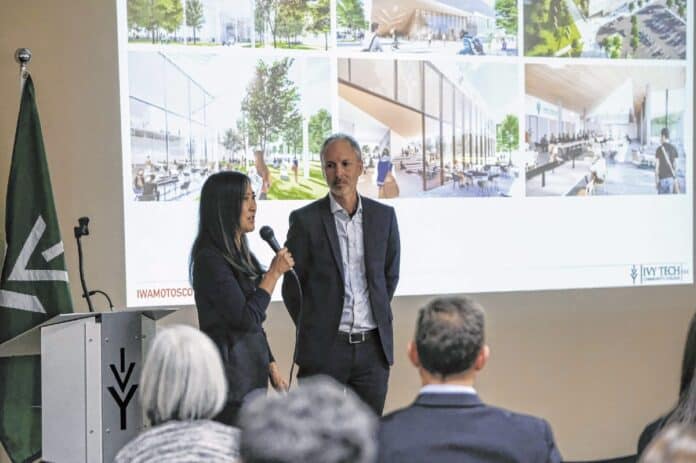
Strong ideas
It was an exciting day for Columbus when five architectural firms from around the United States presented design concepts Nov. 6 for the proposed 80,000-square-foot building that will replace Ivy Tech Community College’s Poling Hall.
The college is collaborating with the Cummins Foundations on a $32 million new main campus building, and having world-renowned architects competing for the design presents a unique opportunity to do something truly special with the new building.
Columbus will assuredly add to its architectural allure while also benefiting the college and its students, with new state-of-the-art labs and project-based learning rooms.
[sc:text-divider text-divider-title=”Story continues below gallery” ]
Helping hands
Eleven volunteers have come together to form the Sixth District Veterans Advisory Board, which hopes to address a "lack of information" on benefits for veterans and their families.
The board was formed by Rep. Greg Pence, R-Indiana, to discuss and promote policies and potential federal legislation to help veterans. He hopes to address homelessness among veterans, substance abuse, and county efforts in reaching out to veterans.
Pence, who served in the U.S. Marine Corp. himself, identified an important need and wants to "champion some ways to help these veterans." That’s a great cause, and we hope the 11 board members can enact some positive changes to help Sixth District veterans.
Worth the cost
County roads may be just as drivable as Columbus roads this winter thanks to changes implemented by the Bartholomew County Highway Department.
Instead of saving money with a salt/sand mixture, which left county roads in significantly worse condition than city streets in the past, more salt and other additives will be used this year instead of sand. With salt costing 10 times more than sand, the county usually used a weaker mixture that did nothing to melt frozen precipitation. Sand can also cause its own issues, like berms and storm sewer issues. This year, they hope that will change.
The change is coming as a result of public demand, and it’s a good one. It may cost a bit more, but that’s a price worth paying if it means making county roads as clear and as safe as those in city limits.




